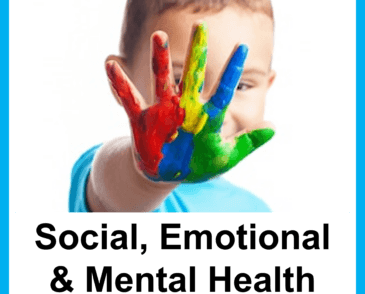

Last Updated - February 17, 2025
Supporting self-regulation through a setting approach – Early Years – Social, Emotional and Mental Health
Settings could develop a Regulation Policy to replace or sit alongside their behaviour management policy to create a consistent approach to supporting regulation.
The setting as a whole value the role of co-regulator in benefitting children with high SEMH needs and ensure they are available both emotionally and physically.
Identifying triggers is a key part of supporting regulation: some triggers can be recognised more easily, and appropriate timely support offered to manage the situation whereas some triggers can be sudden and new.
Co-producing an emotional regulation plan with parents/carers and key staff can promote a consistent approach across home and the setting. The plan can set out known triggers and the child’s preferences and motivators to support them to remain or regain regulation.
Developing an Emotional Regulation Plan – Family Hub (torbayfamilyhub.org.uk)
An empathetic response which aims to try and soothe the child e.g. calming phrases such as ‘oh dear, aww’. This can be coupled with a gentle touch to shoulder if the child welcomes this.
Let the child know it’s OK to have big emotions and use simple language to acknowledge or validate the emotion – ‘I can see you are upset’ ‘Are you feeling angry?’ ‘I’m thinking you are sad, would that be right?
- The naming of the emotion can help to calm the child.
- The checking in can be called ‘collaborative sense making’.
- The child maybe too upset to comment and need time.
A child who is dysregulated will not be available to listen or process information – they will not be ready to say sorry. The child’s need the connection with the adult initially and to feel safe. Once they are completely regulated, we can remind them that they need to ask an adult for help before damaging things or hurting others.
Loud, deep breathing together can help the child regain regulation. The adult can start first modelling taking loud, long breaths in and out. The adult can count out loud 1-5 or 1-10 or backwards 10,9,8…1. The child may begin to regulate and join in with the breathing.
Some children may need sensory breaks to help them remain regulated – too much noise, crowded spaces or bright lights can trigger dysregulation. Regular visits to the outside area may help this or short bursts of exercise – 10 star jumps or running around the garden three time.
An enjoyable activity which encourages laughter or joy can be a positive start to the day or session. This will release endorphins which support regulation.
The adult could model self-talk to share their thought processes when problem solving to suggest possible solutions ‘I wonder what we could do to help us share the funnel?’ ‘I wonder if we could try to take turns… Max, you go first and then it’s your turn, Eddie’. ‘Perhaps we could help each other: ‘who would like to hold the funnel or the tubing first and then, we can all take it in turns to pour?’
View and/or download the Torbay Early Years Toolkit here: Torbay Early Years Graduated Approach Toolkit – Family Hub
